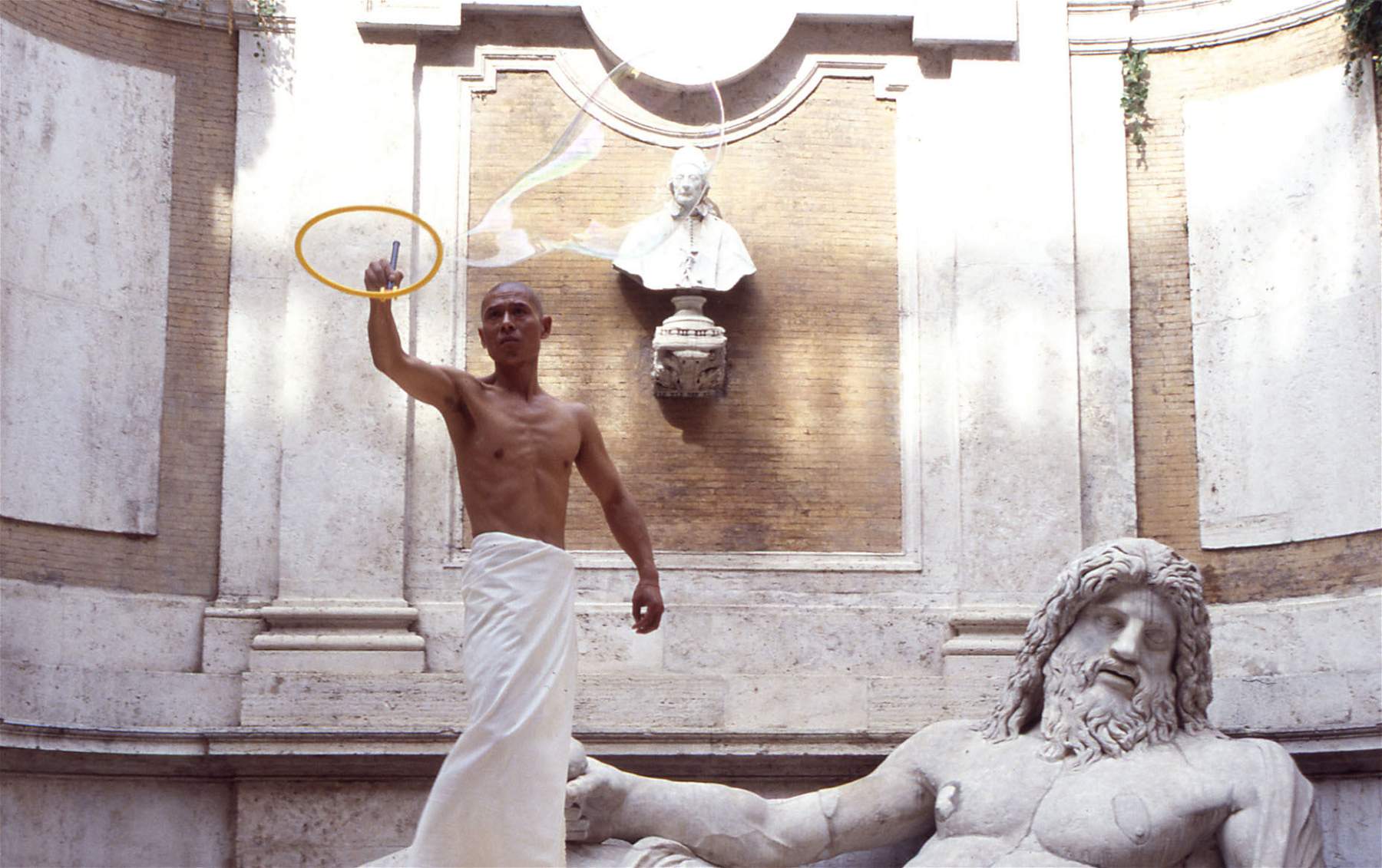From Nov. 20, 2020 to Jan. 16, 2021, Galleria Giampaolo Abbondio in Milan ’s Galleria Giovanni Bonelli venue at Via Porro Lambertenghi 6, will host an exhibition dedicated to one of the most important contemporary Chinese artists, Zhang Huan (Henan, China, 1965), ten years after his solo show at PAC - Padiglione d’Arte Contemporanea in Milan.
The exhibition, titled The body as language, is being held simultaneously with the artist’s solo show at theHermitage in St. Petersburg, and aims to retrace Zhang Huan’s formative years between China and New York, through a series of photographic works documenting his most famous performances, from those of the 1990s to My Rome, produced in 2005 by Galleria Giampaolo Abbondio itself and performed at the Capitoline Museums in Rome. This was the work that effectively closed his performance season to make way for the design of large-scale installations.
Played on the border between East and West, Zhang Huan’s performances explore the body as the meeting and clash of different cultures and temporalities: they are inspired by Chinese folk imagery and by elements of his neighboring Eastern philosophies, and reinterpret these mythologies by investigating the power of rituals in the formation and demystification of identity. The photographs in the exhibition exemplify this poetics, beginning with the Family Tree series documenting the performance in which Zhang Huan had asked three calligraphers to write on his face in Chinese ideograms, myths and divinations from Chinese folk traditions, from the first light of dawn until evening. Over the course of the day, the inscription of these tales had transformed the artist’s face until it was unrecognizable: as night fell, Huan’s face, turned completely black, symbolized the impossibility of defining a precise identity.
The exhibition tour continues with To Raise the Water Level in a Fishpond, a performance in which the artist, together with about 40 people, plunged into the water of a pond tending to raise the water level, in order to transcend the meaning of a Chinese saying that a single individual could not influence his or her surroundings, demonstrating how a community united for a common cause can make a difference. Another work on display is 3006 m3: 65Kg, made in 1997 at the Watari Museum in Tokyo, where “3006 m3” indicated the total volume of the Japanese museum and “65 kg” the weight of the artist. Bound to the structure by hundreds of tubes used for blood transfusions, Zhang Huan sought to tear down the museum, one of the symbols of modern civilization, receiving in return being thrown back toward the walls of the same museum by the elastic tension of the tubes.
Again, the exhibition showcases the work Window (2004, Shanghai) in which the artist stages a relationship, bordering on thrust intimacy, with a donkey. Finally, the exhibition closes ideally with My Rome, where the body becomes a conduit between traditional Chinese culture and the West, representing its encounter with the statues of ancient Rome preserved in the Capitoline Museums. In this performance, Zhang Huan relates with the Marforio, the huge marble sculpture from the Roman era, dating back to the first century AD, depicting a river deity. The title of the exhibition, The body as language, is a tribute to Lea Vergine, the first Italian scholar who recognized body art’s proper historical and critical consideration.
Zhang Huan, after studying at the Beijing Academy of Fine Arts, took part in the Chinese avant-garde scene in the late 1990s, devoting himself to performance as a radical artistic practice. Deeply rooted in Eastern philosophy, he uses his own body, strictly nude, testing its physical and emotional capacity for endurance, as in the performance that made him famous, 12m2 in 1994, in which with his body covered in honey he stood motionless for an hour in a public bath infested with flies and insects. The body is proof of his identity but also a mode of language, expression and immediate communication. In 1998 he moved to New York; here his performances became more elaborate, metaphorical and ritualistic, expanding to include an increasing number of participants with whom to collectively address the issues of identity cultural identity, of East-West dialogue; major works include, in 1999, My America (hard to acclimatize), in 2003 Fifty stars, in 2004 My Sidney and, in 2005, My Rome, produced by Galleria Giampaolo Abbondio and realized at the Capitoline Museums in Rome.
In the same year, Zhang Huan returned to China, to Shanghai, and began another phase of his work, giving up performance and devoting himself to designing large-scale installations such as 100 sages in a bamboo forest (2008) and Dawn of time (2009), to public art projects, including Three heads six arms made in Hong Kong in 2011, and to painting Ash paintings, pictures painted with the ashes of incense collected in temples.
 |
| The body as language. Zhang Huan's exhibition in Milan |
Warning: the translation into English of the original Italian article was created using automatic tools. We undertake to review all articles, but we do not guarantee the total absence of inaccuracies in the translation due to the program. You can find the original by clicking on the ITA button. If you find any mistake,please contact us.